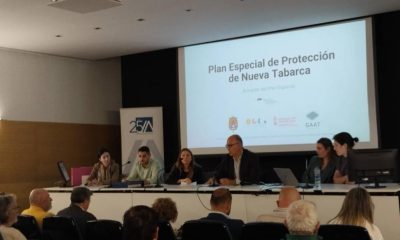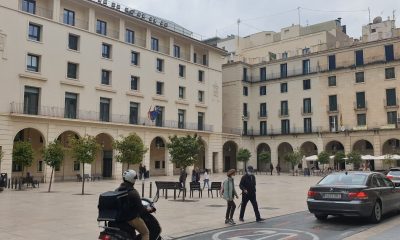Costa Blanca
48 arrested for sexually exploiting 1,000 women in Alicante clubs

A criminal organisation reportedly involved in the trafficking of women for the purpose of sexual exploitation in strip clubs in the province of Alicante has been dismantled by the National Police. 48 women have been released and 48 people have been arrested as a result of the operation (two in Murcia and 46 in Alicante, six of whom have been placed in provisional detention).
Over 1,000 women are thought to have been exploited by the network in the past 12 months. False job offers deceived the victims, who were primarily from South America, into travelling to Spain.
Three strip clubs have been shut down by the National Police after conducting eight house searches in Alicante. They have also blocked 938,000 euros in bank accounts, immobilised 17 properties valued at 1,313,087 euros, confiscated eight forbidden weapons, and confiscated over 150,000 euros in cash, among other items.
A complaint on the National Police’s phone line 900 105 090, which, together with the email Trata@policia.es, encourages citizen cooperation and the private and anonymous reporting of human trafficking-related crimes, sparked the inquiry.
The victims were tricked by phoney work offers in Spain’s cleaning and beauty services industries in their home countries, primarily Colombia and Venezuela. The victims were brought to the clubs to be sexually exploited, but the offer did not materialise when they arrived.
Investigators were able to verify the existence of this transnational criminal organisation in Spain, which was situated in the province of Alicante and was operated by two Colombian women and a Spanish national, thanks to the many investigations that were started at that time. The latter spent his weekends with his family in the Murcia region and his weekdays managing his business in Alicante.
The organization’s structure included two tiers in addition to the three leaders: the taxi drivers who were responsible for driving the women on their outings to give home services and the people in charge of the strip clubs.
Clubs in Orihuela, Elche, and Alicante
The criminal group operated three strip clubs in Alicante, Elche, and Orihuela, which they attempted to pass off as hostels or guest residences in order to conceal their operations. Through the sexual exploitation of numerous foreign women in precarious situations, the network had established a commercial structure intended to benefit itself.
The victims, who were residents of the strip clubs themselves, were compelled to work around the clock, were constantly watched by members of the criminal organisation using sophisticated image and sound video surveillance systems, and had limited freedom of movement because they were only allowed to leave the house for two hours at a time.
They received no respite at all during the first week of labour, and starting in the second week, they were only allowed to have one day off under the supervision of the defunct organisation. According to investigations, the network took at least 40% of each service that the women provided; these funds were then handed directly to the organization’s leaders.
In order to draw in more customers, keep from getting arrested, and mimic a legitimate hospitality company operation, the victims were transferred between the several clubs. The sale of drugs to customers in the various strip clubs might also be detected.
Discover more from Costa Blanca Daily
Subscribe to get the latest posts sent to your email.
Costa Blanca
Plans to limit urban land and protect 109 traditional houses on Tabarca
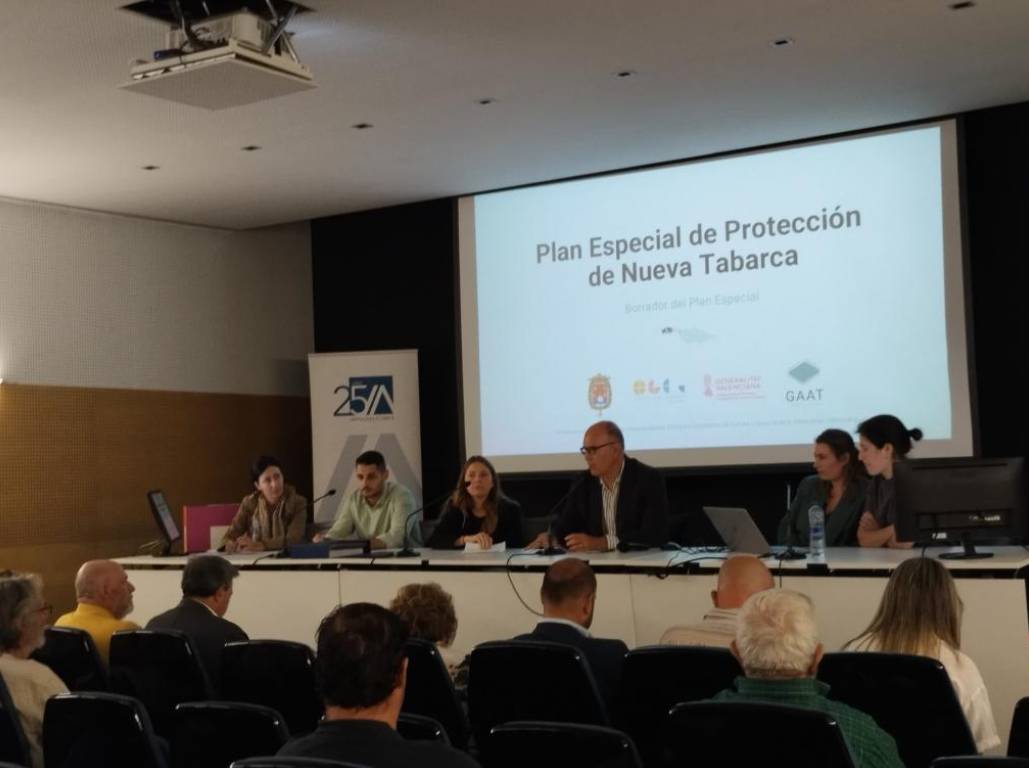
The draft and initial strategic document of the Special Protection Plan for Nueva Tabarca was presented by the Alicante City Council yesterday, Monday May 5th, within the framework of the island’s non-permanent commission. “This is a very restrained plan that respects the enhancement of the island’s cultural heritage, does not propose any new growth, and adheres to the designation of urban land within the walled enclosure,” explains Rocío Gómez, Councillor for Urban Planning. In addition to the 57 listed protected elements, the plan establishes overall protection for over 100 traditional urban houses and restricts demolitions and new construction to contemporary buildings, while also considering the reports previously issued by the General Directorate of Coasts and the Ministry of Culture.
“The objective is to balance the preservation of the island’s distinctive characteristics and heritage with the urban planning requirements and daily life on the island,” Gómez observes. Therefore, they propose various forms of protection for Nueva Tabarca’s cultural heritage. These measures encompass the following: the classification and definition of buildings into typologies, the classification of buildings into various levels of protection, the definition of permitted interventions in buildings, and the introduction of new documentation for permit applications.
The councillor clarifies that these proposals “consolidate our intention to preserve the urban fabric that is so characteristic of the area and are the first proposal for a Special Protection Plan for the island that includes the isthmus as non-developable land and does not anticipate urban growth.”
This is in addition to the 57 elements protected by the catalogue, which include religious, civil, and military structures, as well as 46 traditional Tabarcan homes. Additionally, 109 traditional urban houses are granted overall protection. Such protection involves the preservation of the current volume of the primary building or the first two slopes, the types of roofing, the compositional structure of existing openings, as well as the exterior finishes, textures, and stylistic and constructive details. New construction and demolition are exclusively permitted for modern structures.
The special plan will commence processing upon the Governing Board’s approval of the draft and initial strategic document. Subsequently, the strategic environmental declaration process will commence.
Special Plan Objectives
The Special Protection Plan has the following objectives:
- Establishment of a regulatory framework that enables the integration of the daily lives of residents and urban planning requirements while also safeguarding the distinctive archaeological, historical, and cultural values of the BIC.
- The special plan must be adjusted to comply with the provisions of coastal legislation, as well as other pertinent legislation, territorial and sectoral planning, and the territorial strategy of the Valencian Community.
- We are developing a Heritage Protection Catalogue that includes both natural and urban spaces and structures.
- The development of a property inventory that is informed by parameters such as typological, historical, and state-of-conservation. This inventory helps identify and list features at the waterfront and individually, allowing for the inclusion of buildings in protection categories and outlining what changes can be made.
- The goal is to achieve the environmental and morphological integration of urban interventions into the historic complex through balanced regulation. On the one hand, the special plan established the structural planning of the island, which encompasses the classification of land, the delimitation of the affected and protected areas required by sectoral legislation, the delimitation of the structural planning zones, the primary network of public facilities, the delimitation and characterisation of the green infrastructure, and the planning of non-developable land. On the other hand, it explores the intricate planning of the island, which encompasses the definition and characterisation of urban green infrastructure that is not established as structural planning, the secondary network of public facilities, the delimitation of subzones, with their corresponding specific building ordinances that include dimensions, shape, and volume, the detailed regulation of land uses in each subzone, and the delimitation of typical land use, the establishment of alignments Protection levels and typologies The protection proposals are predicated on a prior classification of existing buildings into building categories, which are groups of buildings and/or structures that share common characteristics, such as their origin, construction characteristics, and others. The Special Plan establishes the following typologies in this regard: • Religious structure: Church of St. Peter and St. Paul. • Governor’s House is a distinctive structure. • Military constructions: Wall, Bastions, Ravelin of the Royal Infantry, San Rafael Gate, San Gabriel Gate, San Miguel Gate, Falsabraga, Moat, Vaults, Powder Magazine, and Guard Corps. • Buildings and civil constructions: School, Lighthouse, Priest’s House, Cisterns, Squares, Road Network, Farmhouse, and Cemetery. • Conventional urban construction situated within party barriers. Subtype of the Tabarquina home. • A modern or contemporary structure. Subtypes: Contemporary detached building and Contemporary Tabarquina home. Similarly, distinct protection levels are established for each building to ascertain which components of the property or building should be preserved. Protection levels are established for both specified and unlisted elements. Therefore, the buildings listed are classified as follows: comprehensive general protection, which is applicable when the entire structure is subject to the conservation of values; partial general protection, which is applicable when the values that require conservation are observed in only certain areas of the structure; general environmental protection, which is applicable when the objective is to preserve certain morphological characteristics; and general typological protection, which is applicable when the objective is to preserve specific typological characteristics, such as subdivision or construction technique. Out of the 109 traditional townhouses that are not listed, a level of overall protection is provided. This protection includes the preservation of the existing volume of the main building or the first two slopes, the types of roofing of the buildings, the compositional structure of the buildings, the existing openings, and the exterior finishes, textures, stylistic, and constructive details. The interventions that are permissible at each level of protection are contingent upon whether the elements are enumerated or have general overall protection. Additionally, their classification as either traditional or contemporary is contingent upon the buildings’ origin. Demolition and new construction are permissible solely in these circumstances.
Discover more from Costa Blanca Daily
Subscribe to get the latest posts sent to your email.
Costa Blanca
In Spain Ryanair overtakes Vueling, Iberia, and Air Europa despite cuts

Ryanair increased its market share in the Spanish airline market by 7.8% during the first quarter of 2025, with 13.3 million passengers transported in comparison to the same period last year. According to the most recent data published by Aena, the Irish airline has achieved a market share of 21%.
After expanding by 2.4%, Vueling has reached the second position with just over 10 million passengers. It was followed by Iberia, which transported 5.3 million passengers, a 2.3% increase, and Air Europa, which experienced a 2.7% decline, with just over 4 million in passengers.
Additionally, EasyJet experienced a 0.5% decrease in passenger volume, reaching 3.1 million. It was succeeded by Binter (2.4 million), Jet2.com (2.1 million), Air Nostrum (1.8 million), Eurowings (1.6 million), and Iberia Express (2.9 million).
Despite the ongoing dispute with Aena and the government regarding the absence of incentives at regional airports and the escalating cost of airport fees, Ryanair’s leadership remains in position. The company has discontinued operations in Valladolid and Jerez as of March 28th and has eliminated up to twelve routes. This signifies the elimination of 800,000 seats at regional airports in Spain this summer (Ryanair eliminates 800,000 seats).
The airline anticipates that its expansion will be sustained by the expansion of its capacity at major airports, despite the 18% decrease in its secondary airport offerings. The regional reduction will be compensated by a 2% to 3% increase in operations in Madrid, Barcelona, Alicante, and Malaga, which will result in 1.5 million additional seats.
Aena is explicitly blamed by the airline for the lack of economic incentives at smaller airports and the increase in airport taxes, which the airline used to justify this decision. In the interim, the airline’s manager has refuted these allegations, which has exacerbated the exchange of accusations, particularly between the Minister of Consumer Affairs, Pablo Bustinduy, and the CEO of the low-cost company, Michael O’Leary.
Discover more from Costa Blanca Daily
Subscribe to get the latest posts sent to your email.
Costa Blanca
Six years of expulsion from Spain for leading a gang that prostituted women
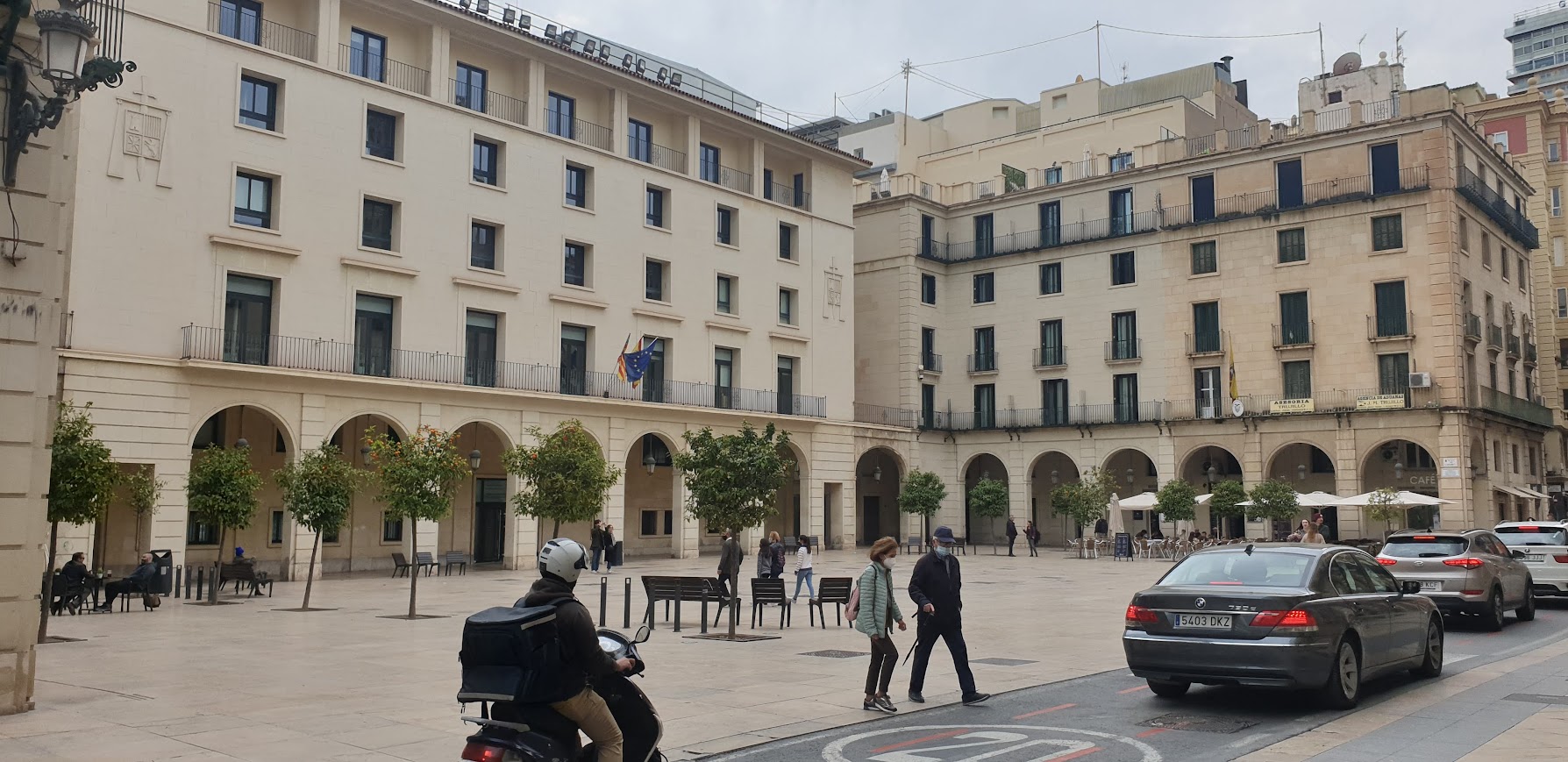
A Romanian man in his sixties was tried yesterday, Monday May 5th, by the Alicante Court on two separate charges. The charges stemmed from his involvement in an organised group that aimed to force women into prostitution through an enslavement system. The court imposed a six-year ban from Spain on the man.
The Prosecutor’s Office conjectured that the defendant was accountable for the recruitment and transportation of the victims, the majority of whom were minors and originated from Romania. Once they arrived in the province of Alicante, the defendant directed them to various regions within the province or the country for prostitution.
After his defence reached an agreement in accordance with the Public Prosecutor’s Office, the accused admitted the facts during the two proceedings scheduled for this Monday before the same court as the Second Section.
The agreement has resulted in a reduction of the total sentences from 26 years and three months for the first trial and 58 for the second to a total of 26 years: 5 years and 8 months for the first case and an additional 21 for the second. This reduction was achieved by applying both the mitigating circumstance of acknowledgement of the facts and the highly qualified one of undue delays, as determined by the defence attorney, Roberto Sánchez, given that the events in both proceedings occurred over 20 years ago, between 2001 and 2004.
Nevertheless, the sentence, which has been rendered definitive after being administered in person, consists of a maximum of six years of expulsion from the national territory, contingent upon the parties’ agreement. The accused’s dangerousness and the delays, as well as the fact that he had already served nearly four years in pretrial detention in Spain, have been considered.
The defence attorney has stated that the expulsion sentence in Romania, the defendant’s country of origin, will be effective immediately. The defendant had previously served time for homicide in Romania.
The first case results in his conviction for one count of criminal association, which carries a sentence of one year in prison. They also find him guilty of two counts of adult prostitution, each carrying a one-year prison sentence. Additionally, he is sentenced to eight months in prison for receiving stolen goods. Finally, he is found guilty of one count of conspiracy to murder for allegedly running a criminal organisation that specialised in violent crimes at Fontcalent Prison, which carries a sentence of one year and nine months.
The prosecution alleges that the man, who was in possession of a cell phone, directed several members of the gang to murder two individuals with whom the criminal organisation had unresolved business. Nevertheless, the Civil Guard successfully averted the executions.
Additionally, in the second case, he is found guilty of eight offences of prostitution for minors, each of which is punishable by two years in prison; four offences related to prostitution for adults, each of which is punishable by one year in prison; and a continuing offence of falsifying official documents, for which he is sentenced to an additional year in prison.
Discover more from Costa Blanca Daily
Subscribe to get the latest posts sent to your email.
-
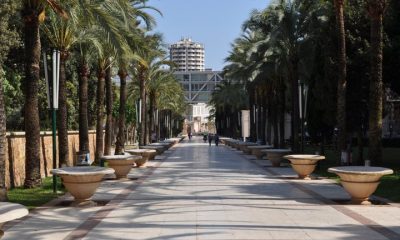
 Costa Blanca2 weeks ago
Costa Blanca2 weeks agoBenidorm studies the temperature of its streets to understand “heat island effect”
-

 News2 weeks ago
News2 weeks agoThe Generalitat presents the road map for the widening of the CV-95 between Orihuela and Torrevieja
-
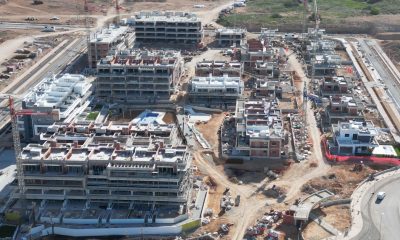
 Costa Blanca2 weeks ago
Costa Blanca2 weeks ago44% of homes in Alicante province were purchased by foreigners
-
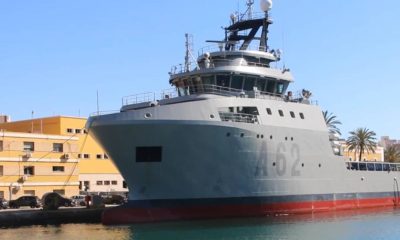
 Costa Blanca2 weeks ago
Costa Blanca2 weeks ago‘Cartagena’, the new electric Navy ship
-

 Costa Blanca2 weeks ago
Costa Blanca2 weeks agoFour minors arrested for smuggling drugs on a school trip
-

 Costa Blanca2 weeks ago
Costa Blanca2 weeks agoYoung man arrested for robbing ATM users in Alicante
-

 Costa Blanca2 weeks ago
Costa Blanca2 weeks agoAlicante port gets an electric boat for cleaning the water surface
-

 Costa Blanca2 weeks ago
Costa Blanca2 weeks agoCompetition on Spain’s railways is driving down prices

